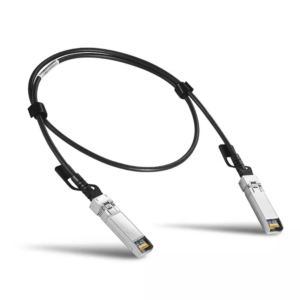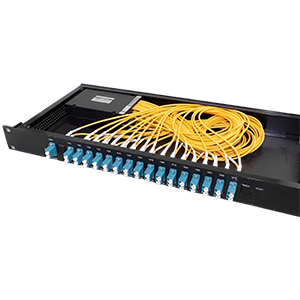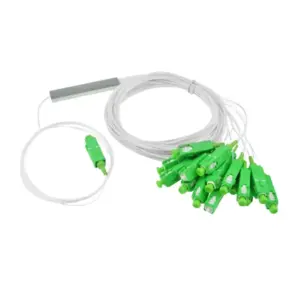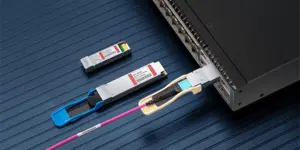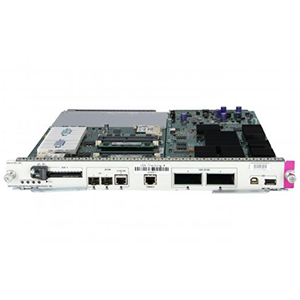Welcome to our comprehensive guide to SFP cables! As an enthusiast looking to enhance your network infrastructure, you’ve come to the right place. In this guide, I will personally walk you through the details and provide valuable insights into SFP cable applications.
Introduction to SFP Cable
As an optical fiber connection solution commonly used for data transmission, SFP Cable (Small Form-Factor Pluggable Cable) is widely used in the network field. It is a pluggable fiber optic module with small size and high flexibility. The main features of SFP Cable are its pluggability, high speed and scalability, making it an ideal choice for data center networks, local area networks (LANs) and server interconnections.
SFP Cable data transfer rate
The maximum data transfer rate supported by an SFP Cable depends on its specific type and specifications. Common SFP Cable types currently on the market include 10G, 25G, 40G and 100G. These types of SFP Cables can provide different data transmission rates to meet the needs of different network environments.
SFP Cable structure and type
The structure of SFP Cable consists of two main components: SFP slot and fiber optic cable. The SFP slot is an interface used to insert SFP modules, which can connect to network devices. Fiber optic cables are responsible for transmitting optical signals and transmitting data from one device to another.
There are many types of SFP Cable to choose from according to different data transmission rate requirements. Common types include 10G SFP Cable, 25G SFP Cable, 40G SFP Cable and 100G SFP Cable. These different types of SFP Cable provide different bandwidths and transmission rates to adapt to network environments of different sizes and complexity.
SFP Cable application scenarios
In data center networks, due to the high-density layout of the data center and the large number of server interconnection requirements, SFP Cable is widely used to connect switches, servers and storage devices. Its high-speed transmission and pluggability enable data centers to flexibly expand and manage networks.
In local area networks (LAN), SFP Cable is commonly used in enterprise and campus networks to connect network devices such as switches, routers, and servers. By using SFP Cable, high-speed and reliable data transmission can be provided to meet the needs of large-scale data transmission and communication.
In server interconnection, SFP Cable plays an important role. It can be used to connect high-speed channels between servers to achieve fast communication and efficient data transmission within the data center. This connection provides low latency and high bandwidth, meeting the requirements for high-performance computing and large-scale data processing.
Advantages and limitations of SFP Cable
First of all, SFP Cable is highly flexible and pluggable. It can be quickly replaced and upgraded as needed without replacing the entire connection link. This pluggability makes network maintenance easier while also reducing downtime and costs.
Secondly, SFP Cable supports a variety of data transmission rates, ranging from 10G to 100G. This scalability makes SFP Cable suitable for network environments of different sizes and complexities.
However, SFP Cable also has some limitations. The first is the limitation of transmission distance. Different types of SFP Cable have certain restrictions on transmission distance, and you need to choose the appropriate type according to specific needs. In addition, the power consumption of SFP Cable also needs to be considered, especially in large-scale data center networks, power management and energy efficiency optimization need to be paid attention to.
Comparison between SFP Cable and other fiber optic modules
For example, the main difference between SFP Cable and SFP+ is size and slot density. SFP Cable is smaller and suitable for high-density network environments. SFP+ is more suitable for higher data transfer rate requirements.
Another example is compared to QSFP (Quad Small Form-Factor Pluggable). QSFP is a high-speed fiber optic module that supports higher data transmission rates and is commonly used in 40G and 100G networks. In contrast, SFP Cable is more suitable for lower-speed network environments, such as 10G and 25G.
When choosing SFP Cable or other fiber optic modules, you need to make trade-offs based on the specific network environment and needs. SFP Cable is suitable for scenarios such as small and medium-sized networks, data centers, and enterprise LANs, while high-speed optical fiber modules such as QSFP are suitable for large-scale networks that require higher bandwidth and transmission rates.
SFP Cable deployment and configuration considerations
First, it is very important to install and connect the SFP Cable correctly. Make sure the slot is aligned with the SFP plug and push gently until the plug is fully inserted into the slot. In addition, use the correct fiber optic cable to connect the SFP Cable to the network device to ensure stable signal transmission.
Secondly, environmental requirements also need to be considered. When deploying SFP Cable, you need to pay attention to the temperature and humidity of the environment. Make sure the ambient temperature is within the specified range to avoid affecting its performance and life. Humidity also needs to be controlled within an appropriate range to prevent fiber moisture and signal attenuation.
Future development trend of SFP Cable
First of all, the new generation of SFP Cable standards and technologies are constantly developing. As network demands grow, the new SFP Cable standard may provide higher data transfer rates and greater bandwidth to meet growing data demands.
Secondly, with the popularity and development of optical fiber networks, SFP Cable is expected to play a more important role in future optical fiber networks. Its flexibility, pluggability and serviceability make it ideal for adapting to changing network needs.
Summarize:
SFP Cable, as a pluggable optical fiber connection solution, is widely used in the network field. Its flexibility, high speed and scalability make it ideal for scenarios such as data center networks, LANs and server interconnections.
However, when deploying and configuring SFP Cable, you need to pay attention to correct installation and connection, and consider environmental requirements. In the future, SFP AOC Cable is expected to further promote the development and application of optical fiber networks with the development of new generation standards and technologies. Selecting the appropriate fiber optic modules, balancing tradeoffs based on specific network needs and environments, will help build a high-performance and reliable network infrastructure.

